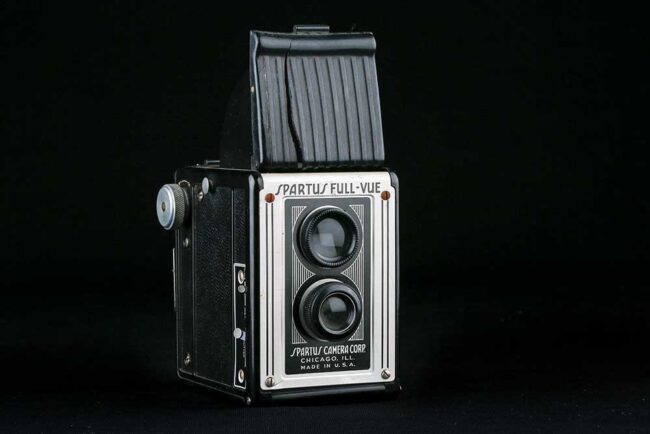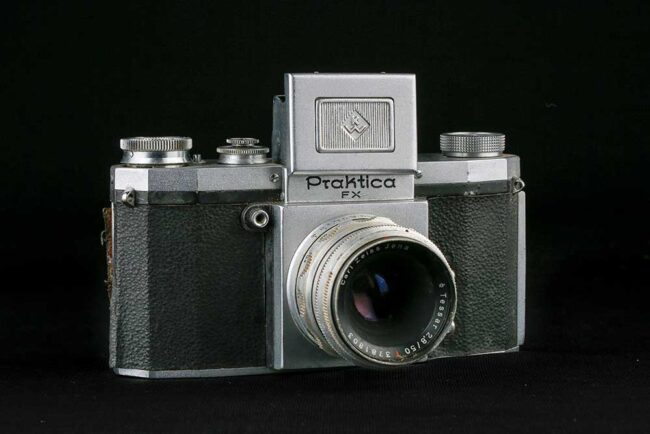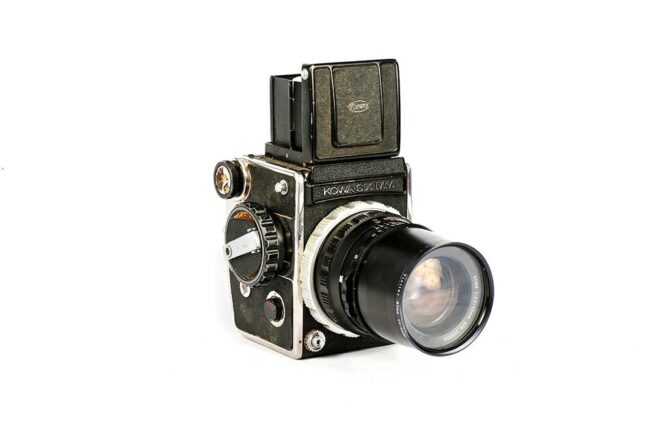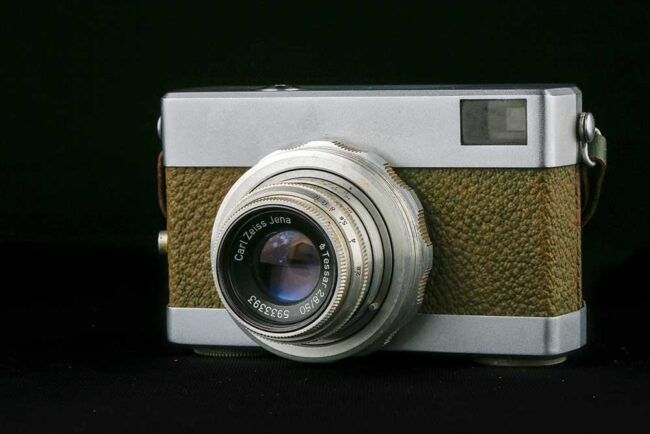Spartus Full-Vue, 1948-1960, pseudo-TLR Camera, PhotoMuse Collection, 2015, Donation of Mr. Herbert Ascherman Jr.
The simple Spartus Full-Vue plastic pseudo-TLR was made from 1948 to 1960 by American manufacturer Spartus, later Herold Products. This model exposes 2¼” square images on 120 film. It includes a 100mm f/16 meniscus taking lens, and a shutter with 1/60th sec and “T” settings. The lens of its viewfinder is larger in diameter than…










